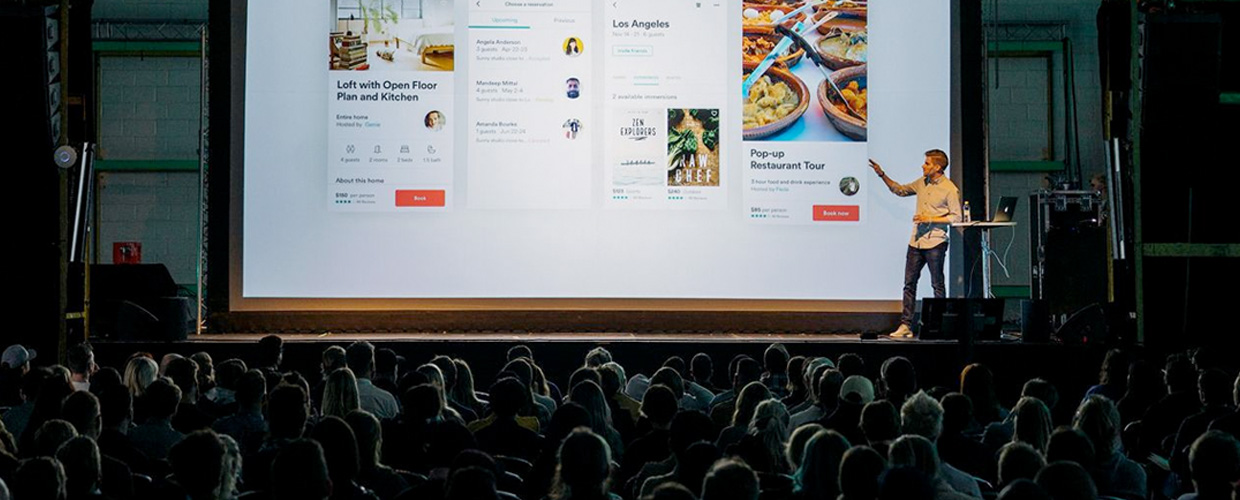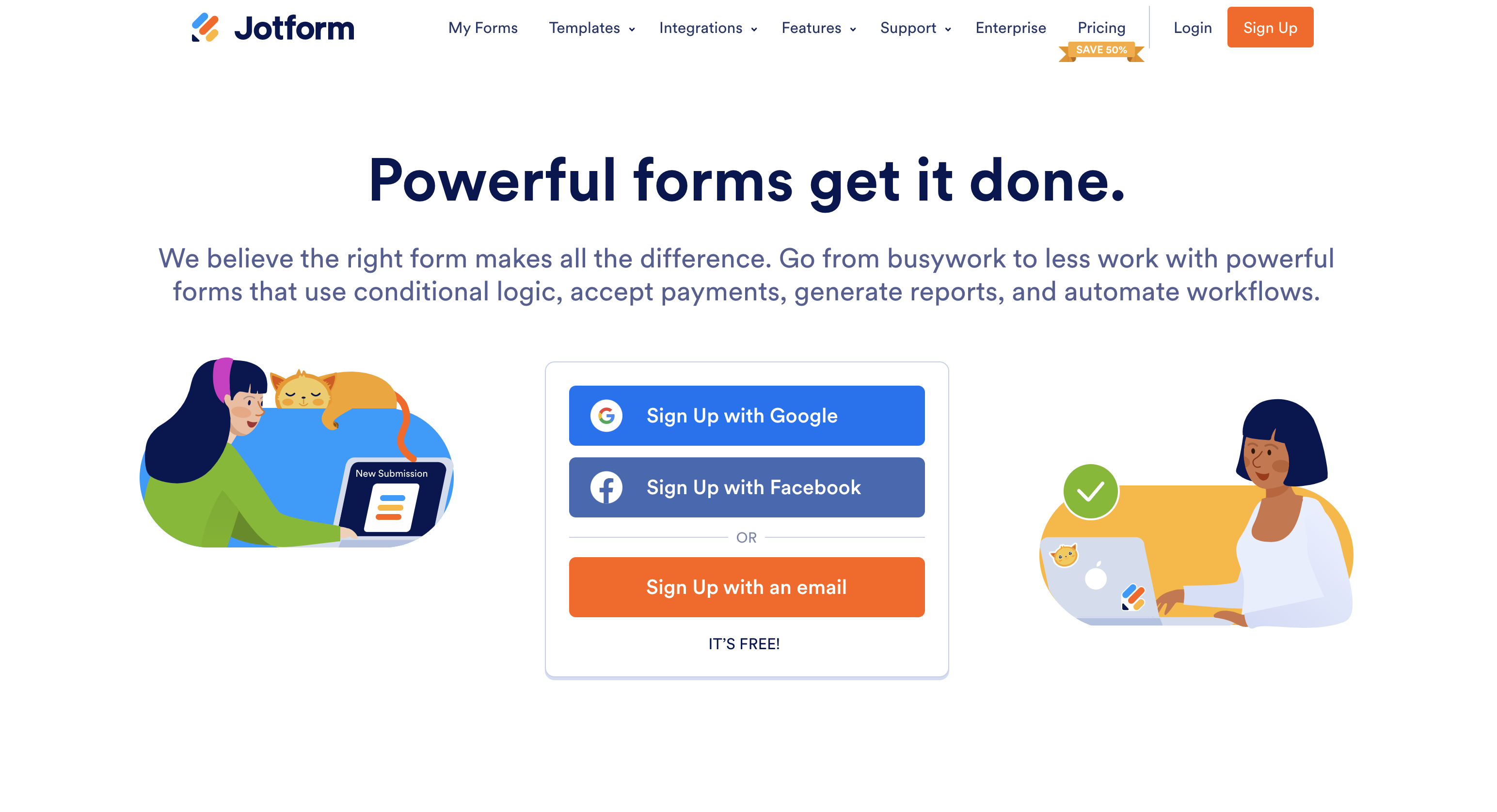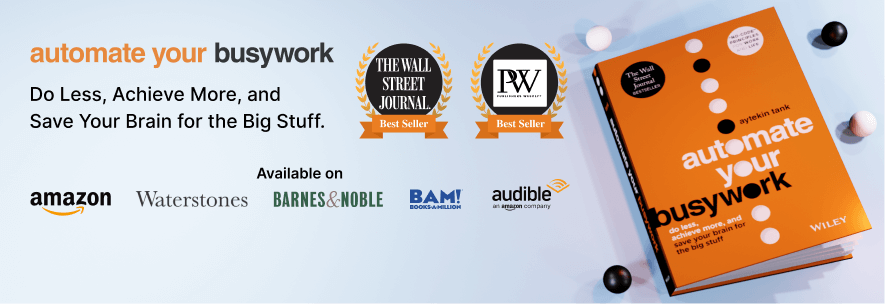9,810.
That’s how many steps I’ve taken today.
190 steps below the recommended daily average to stay healthy, to be exact.
This is only a fraction of the countless ways in which apps, devices, and platforms measure my performance on a daily basis.
How well am I doing, in terms of fitness and productivity? How about mindfulness and money? Could I do better?
The answer is always yes. We’ve become a culture obsessed with optimization: the drive to improve on the basis of data.
Optimization appeals because it holds out the promise of perfection. A miraculous solution, a quick fix that lets us bypass swathes of time and effort to achieve a mind-blowing result.
If we follow just a few simple steps, we can have the relationship, the job, the life we have always dreamed of.
Chasing Perfection vs. Maintaining Perspective
This mindset of constant optimization also applies to the world of startups.
A/B tests and other fancy growth hacking terms break into our lives with the promise of bringing data and insight, which we hope will shortcut our way to hyper growth.
After all, data doesn’t lie — it is dispassionate, objective, black and white.
It feels safe.
It brings us insight and direction.
But is data our excuse for looking for a fast-track to success instead of playing the long game of building a product customers love?
Take me as an example. Yesterday, I spent over 4 hours with our lead designer discussing how to split-test the color of our homepage button.
Yes, I’m talking about wasting my entire productive morning planning how to optimize that little signup button:
Fine, a darker grey button could win the split test by 0.33% higher conversions. But wouldn’t it be better to spend the same amount of resources on delighting our customers?
It’s true, data isn’t evil. But an over-reliance on data can cloud our ability to see creative solutions to fundamental problems.
When we’re hyper-focused on micro-interactions, we lose our perspective; and when we zoom out, we may be left with an unrevealing jigsaw of ill-fitting pieces.
Remember Douglas Bowman’s departure from Google and their infamous testing of 41 different shades of blue? For him, the sword of data had become too sharp, too pervasive — and he refused to fall on it.
Real growth comes from somewhere far more multifaceted than a “get rich quick” scheme.
Smoke and mirrors
As with optimization, we want to believe in a magic trick that lets us skip the queue to superstardom, hyper-inflating our growth with minimal effort at a maximal scale.
We assume there are hidden conversion doors with thousands of customers waiting behind them; all we need to do is find the key.
Unfortunately, Sean Ellis’s term has been twisted beyond recognition over the past seven years: it is clear that he didn’t intend for growth hacking to become a synonym for “I don’t want to work hard or spend money.”
Think back to the original growth hacker startups we’ve come to idolize — AirBnB, DropBox, Etsy, Uber — how far removed do they seem from our current social media bots and dodgy SEO backlinks?
Today, growth hacking has come to represent something that deceives rather than empowers.
It’s the dumbing down of complex issues into easily digestible theories, the substitution of inconveniently weighty lead bullets for those nicer, lightweight silver ones.
It seeks short-term wins, not long-term growth. It lacks patience, and values instant gratification.If applied to a relationship, this would be translated as: how little do I need to care about you to make you care about me?
So: how much DO we care about our customer?
Customers are people that we enter into a relationship with; for the sake of argument, let’s call it a friendship.
We all know that for a friendship to flourish, there needs to be a high degree of transparency and respect involved.
But in the midst of this incessant optimization and growth hacking hype, these factors are often compromised, or forgotten altogether.
Despite knowing that most forms of advertising no longer work, we harass consumers with annoying ads and email pop-ups, insisting that they pay attention, sign up, buy.
But we forget that they have the power to ignore us, mute the noise, block the ads, unlike our pages and unsubscribe forever.
With customers growing increasingly selective about what they choose to consume, retention is the primary factor that differentiates successful startups from those who get left behind.
And the main reason customers leave us, according to the Rockefeller Foundation, is perceived indifference:
If our customer feels neglected, overlooked, starved for attention or taken for granted, they will leave us. Because they are human — not data bots.
So, with the limited time and resources of a startup, should we focus on short-term growth hacks or on the less scientific, more qualitative matter of delighting our customer and making them feel valued?
Here’s the answer
What Sam Altman puts perfectly is true:
“Startups are defined by growth, but growth isn’t step one in building a great company.
If you focus on trying to grow before you make a product people love, you are unlikely to succeed.”
Ryan Holiday, bestselling author of Growth Hacker Marketing: A Primer on the Future of PR, Marketing and Advertising, agrees:
“Your marketing efforts are wasted on a mediocre product — so don’t tolerate mediocrity.
Isolate who your customers are, figure out their needs, design a product that will blow their minds.”
If we look back to those mythical companies who growth hacked their way to millions, they had one thing in common: a relentless drive to empower their customer and a desire to interact with them directly.
Real growth doesn’t come from…
…spamming Twitter for leads, or conducting thousands of A/B tests to improve your click-through rate.
There’s no magic solution. It’s not a silver bullet.
It comes from a product that makes marketing easy. A product worth growing. A product people will be falling over themselves to tell their friends about.
A handful of truly engaged, loyal followers instead of thousands of fleeting passers-by. It comes from the hard work of a whole team, not one growth hacking ‘magician’.
Invest your time in customer service instead of button colors. Don’t trick your customers or mislead them. Understand them. Earn their trust, their awareness and their respect.
Oh, and stop treating them like your customers. Start treating them like your friends instead. Everything else will follow.
How should you maintain a beautiful friendship?
- SPEED UP. Research shows that today’s consumer loses focus after eight seconds; we officially have less patience than a goldfish. Slow-loading sites significantly reduce traffic and SEO rankings, so make sure your platform loads at lightning speed — and certainly in less than eight seconds.
- EMPOWER customers by giving them lasting value — without asking for anything in return. Whether it’s beautiful free imagery like Unsplash, an app, a platform, software or a guide, high-quality content without the hard sell will be a gift that keeps on giving — for both of you..
- GO BEYOND following them back on social media. Start conversations and participate in a way that is meaningful. This will allow you to glean data and insights into their behavior and help you to understand them better. Person-to-person communication establishes long-term trust and rapport..
- INVEST in customer support as early on as possible. Make response times instantaneous. Teach customers about your product, engage with them, advise them — don’t merely describe the functions and leave them to it. Hyper-growth startup Slack hired 5 x more customer support representatives than salespeople, and look where they are now..
- COMMUNICATE. Establish channels that show your customers that you care about their opinion. Check in regularly, ask for feedback and take it on board. Recent developments in technology allow you to set up fully-functioning forms in a matter of minutes without having to hire a designer or developer. Others offer simple, transparent ways of emailing up to 2000 subscribers at a time for free. So, there’s no excuse not to get in touch.
The future
The times they are a’changing.
We are moving from mass marketing to mass personalization with a focus on individuality.
The ‘one-size-fits-all’ mindset is on its last legs. Instead, a more holistic approach that treats consumers as people — with emotions, habits, and experiences — takes center stage in the future of marketing.
The temptation to rely on short-cuts can be powerful, but in the last instance, sustainable growth relies on our ability to attract and retain our customers by making them feel valued.
Optimization and growth hacks should not be cast aside, however; these exercises bring important energy, focus and experimentation to any startup.
But they should exist as part of a much larger, customer-centric operational strategy: one that balances short-term with long-term, growth with the product, and data with intuition.
Real friendship takes time. Spend it wisely.















Send Comment:
3 Comments:
More than a year ago
Great post ✌?
More than a year ago
great post. Thanks a lot
More than a year ago
Thank you for this useful perspective on growth. The startup community really has gone crazy on the growth-hacker thing. Growth should not ever be the application of tactics to achieve marketing goals, though that is sometimes how it's being practiced. Growth is really the management of the user experience to help them enjoy the core value of the product you're offering. Taking a step back, growth should be a team effort, tested, yes- but designed around customer value and a product users love.